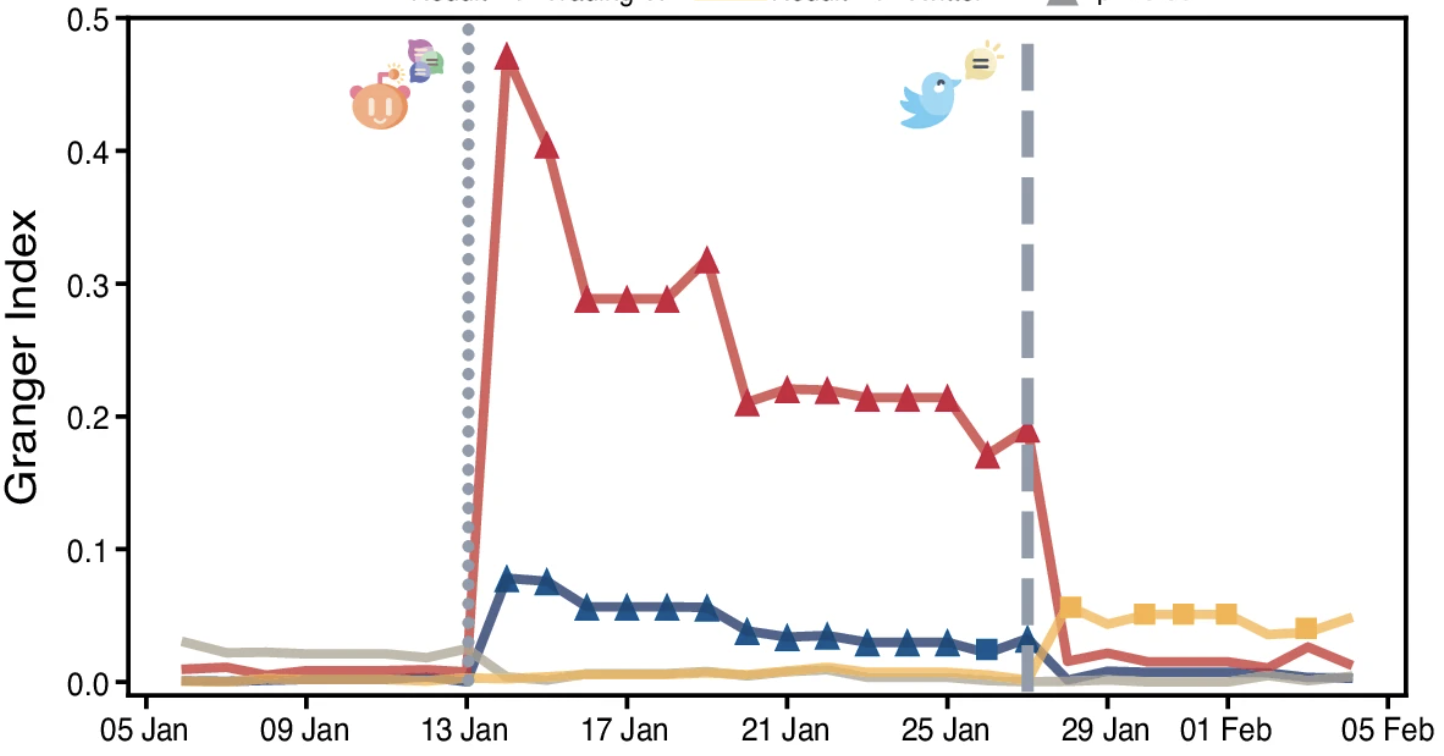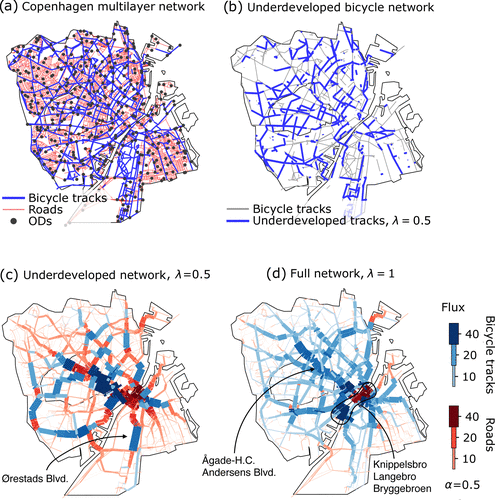We have two new publications out, one on the Gamestop short squeeze by Reddit users, and one on bicycle network design with use case Copenhagen:
- The dynamics of the Reddit collective action leading to the GameStop short squeeze, by A. Desiderio, L.M. Aiello, G. Cimini & L. Alessandretti , published in npj complexity

In early 2021, the stock prices of GameStop, AMC, Nokia, and BlackBerry experienced dramatic increases, triggered by short-squeeze operations that have been largely attributed to Reddit’s retail investors. Here we shed light on the extent and timing of Reddit users’ influence on the GameStop short squeeze. Using statistical analysis tools with high temporal resolution, we find that increasing Reddit discussions anticipated high trading volumes. This effect emerged abruptly a few weeks before the event but waned once the community gained widespread visibility through Twitter. Meanwhile, the collective investment of the community, quantified through posts of individual positions, closely mirrored the market capitalization of the stock. This evidence suggests a coordinated action of users in developing a shared financial strategy through social media—targeting GameStop first and other stocks afterward. Overall, our results provide novel insights into the role of Reddit users in the dynamics of the GameStop short squeeze. - Cohesive urban bicycle infrastructure design through optimal transport routing in multilayer networks, by A. Lonardi, M. Szell and C. De Bacco, published in Journal of the Royal Society Interface

Bicycle infrastructure networks must meet the needs of cyclists to position cycling as a viable transportation choice in cities. In particular, protected infrastructure should be planned cohesively for the whole city and spacious enough to accommodate all cyclists safely and prevent cyclist congestion—a common problem in cycling cities like Copenhagen. Here, we devise an adaptive method for optimal bicycle network design and for evaluating congestion criticalities on bicycle paths. The method goes beyond static network measures, using computationally efficient adaptation rules inspired by optimal transport on the dynamically updating multilayer network of roads and protected bicycle lanes. Street capacities and cyclist flows reciprocally control each other to optimally accommodate cyclists on streets with one control parameter that dictates the preference of bicycle infrastructure over roads. Applying our method to Copenhagen confirms that the city’s bicycle network is generally well-developed. However, we are able to identify the network’s bottlenecks, and we find, at a finer scale, disparities in network accessibility and criticalities between different neighbourhoods. Our model and results are generalizable beyond this particular case study to serve as a scalable and versatile tool for aiding urban planners in designing cycling-friendly cities.
